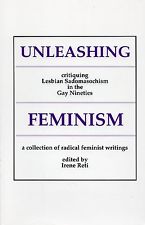After 27 years, Cruising has finally been released on DVD. The film’s suggestion that sexual repression is more of a cause of violence than sexual expression is oddly timely, in the middle of a spate of conservative, homophobic leaders being caught with their pants down, figuratively speaking.
I’ve seen it once, years ago, possibly on TV and possibly cut. Regardless, it didn’t make a strong impression on me. I had seen the “cop/journalist enters the sexual underworld and undergoes an identity crisis” premise so many times in the direct-to-cable/video erotic thriller genre that it had become a cliche. I would like to see it again; it’s always important to see where the meme began.
I’d comment more on the film itself, if I had clearer memories of it. The only image that really stuck with me was the final shot of the cop’s fiance putting on the cop’s mirrored sunglasses and leather wheel cap, suggesting gender hybrdity and/or straight appropriation of gay imagery. How much of straight male sexual fantasy is the same as gay male fantasy, but with women instead of men?
Film Threat speaks highly of the film, saying that it’s much deeper than the imitation genre it spawned.
On one level, “Cruising” appears to be about Pavlovian conditioning. As Burns [played by Al Pacino] immerses himself deeper into the primal, extreme sensations of the bar scene, his lovemaking sessions with fiancée Nancy (Karen Allen) seem more physically aggressive. If a straight man is tossed into a sea of rough, sadomasochistic gay sex, will he begin craving this lifestyle? Will he stop appreciating the more tender, delicate advances of a woman? As it turns out, the film chickens out and never clarifies its stance on this issue of heredity versus environment (on the film’s DVD commentary track, the director admits that his movie “asks more questions than it answers”).
[William] Friedkin insists, however, that he never meant to correlate homosexuality and murder with “Cruising.” Even so, it’s easy to understand why gays would respond defensively to the film. Who wouldn’t balk after seeing their lifestyle coupled with both lurid, public orgies of rough ‘n tumble copulation and an epidemic of grisly murders?
Playing the devil’s advocate, however, perhaps Friedkin deserves to be cut some slack. The film’s terrain is clearly a limited, select subculture of the larger homosexual community, and one that did exist. Friedkin insists that most of the bar patrons featured in the film were true-to-life participants from The Day. We’re guided through heavy leather districts like Central Parks’ Rambles, and underground West Village clubs hiding between industrial meat packing plants (meat hooks dangle ominously in the foreground during several scenes).
During one hilarious sequence, customers pack a crowded bar donning patrol uniforms for a cop-theme costume night. Pacino’s character, unaware of the dress code and wearing more casual attire, is kicked out when managers accurately suspect that he’s a law enforcer. In a sea of blue police shirts, billy clubs, and dark slacks, Burns is the only real policeman in the joint – and he’s thrown out on his ear.
Gloria Brame has another take on the film, seeing it as a kind of Boys in the Band for kinky people.
You can also expect to glimpse a dangerous and unfamiliar world of leather. Sexual repression is an ugly thing and that ugliness is built into this film. These were the days before AIDS, before safe sex, and before SSC and safe words and all the other little protections that activists began to promote as a way of protecting leather people against predators. Clubs back then were raw and secretive and sleazy, filled with guilty people who led double lives and believed that antibiotics could cure every sexual disease.
Yet, despite all that, look at the men in the bar, many of whom were real players, not actors. They are a piece of leather history. They are the people who paved the way for the rest of us, who built the clubs, who opened the dialogues on SM, and who, ultimately, are responsible for taking SM out of the closet. For opening that world to public view, both the men who participated in the film and the director, William Friedkin, deserve kudos.
I have a theory that the mainstream interacts with minorities in three phases. The first is the “visibility at any price” phase, in which any kind of statement of existence is necessary, even if the minority is portrayed as clowns or monsters or victims. The second is the “really, we’re nice” phase, in which the minority is packaged as unthreatening and ready and willing to be assimilated into the dominant culture. The third is the “let’s cut the crap” phase, when internal issues and conflicts and rough edges that were suppressed in the previous stages come out. Cruising is an example of phase one. Something like the godawful film adaptation of Anne Rice’s Exit to Eden or the vastly superior Secretary are phase two. Kinky people still don’t have a phase three.

